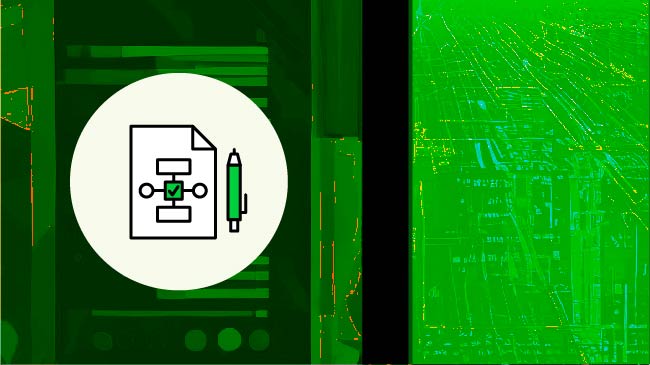Decoding Millennial and Gen Z Workplace Communication
Making our Strong Community Stronger webinar highlights the different communication styles the two generations bring to the workplace

Communication gaps exist between generations and can shape workplace interactions. Presented by the Open Mainframe Project’s Making Our Strong Community Stronger (MSCS) initiative, a recent webinar, “LOL or BRB: Decoding Millennial and Gen Z Workplace Communication,” focused on bridging communication gaps between generations, fostering trust and exploring how technology shapes workplace interactions.
Moderated by Dr. Gloria Chance, PhD, founder of the Mousai Group, the discussion featured a panel of experts from diverse professional backgrounds:
- Elizabeth Joseph, global head of the Open Source Program Office at IBM zSystems and LinuxONE
- Lily McPadden, QA developer intern at IBM
- Brennen Glover, onboarding and employee development at Rocket Software
- Andy Wig, senior editor at TechChannel
- Arin Seeger, marketing manager at TechChannel
Some of the key highlights and insights from this enriching conversation include:
1. The Generational Divide in Communication
The discussion kicked off by exploring how each generation’s upbringing influences their communication styles.
Joseph described herself as an “elder millennial,” bridging the gap between pre-internet and digital-native eras. Reflecting on the changes that occurred during her youth, she explained, “I grew up with a black-and-white TV in my room, but by the time I graduated high school, I had built my own website.”
On the other hand, Gen Z representatives like McPadden highlighted their fluency in digital-first communications. “I see a thumbs-up emoji as a simple acknowledgment—but learning that it can sometimes carry other meanings surprised me,” she said.
This underscores the subtle but significant differences that can create misunderstandings across age groups.
2. Navigating Trust and Miscommunication
Building trust through clear communication emerged as a recurring theme. Glover, an HR veteran, emphasized the critical role of creating psychologically safe spaces. He advised, “When you don’t feel safe to ask questions or clarify something, anxiety builds up. Communication truly builds the culture in a company.”
Wig shared a personal anecdote on how miscommunication can create unintended tension. He reflected, “I once offered to help a colleague early in my career, but she jokingly asked, ‘Are you trying to take my job?’ It was only later I realized she meant it as a subtle way of asking me to stay in my lane.”
This highlighted the importance of assuming positive intent, but also seeking clarity to avoid eroding trust.
3. Authenticity in Professional Spaces
The balance between professionalism and authenticity was another key focus. Joseph noted her early-career hesitations as a woman in tech, saying, “Early on, I felt the need to dress and speak in a way that screamed ‘technical professional.’ Now, as I’ve gained confidence and experience, I feel free to be my authentic self at work.”
Similarly, Glover mentioned his early struggles as an African-American male in HR, sharing, “I overanalyzed every word, worrying about how it would be perceived. With time, I learned that being my authentic self is what got me here, and that’s what my team values.”
This underscored the importance of confidence and trust in fostering authenticity.
4. Technology as a Communication Tool
The panelists agreed on the growing influence of technology in shaping workplace communication. Seeger talked about the importance of adapting to digital norms. “Your digital footprint is forever,” she said. “It’s important to use these tools responsibly, ensuring clarity and professionalism while leveraging their advantages.”
For McPadden, tools like Slack have played a vital role in facilitating communication for a global team. “Our team uses Slack channels to collaborate across time zones, leaving emails mostly for scheduling meetings,” she explained.
The comments from the two Gen Z representatives reflect how younger generations often prefer real-time, informal tools for collaboration, while older systems like email take a backseat.
5. Intentionality in Communication
The panel emphasized that effective communication requires intentionality. Wig urged professionals to adapt their communication style to their audience. He noted, “If someone includes emojis or exclamation points in their emails, I’ll use a similar tone to match their style.” This flexibility helps bridge gaps and build rapport across diverse teams.
Final Words of Wisdom
The webinar concluded with a powerful message. Glover reminded attendees of the value of diverse perspectives in the workplace, saying, “Bringing your authentic self to work adds value. Diverse voices lead to better solutions for teams and companies.”
Joseph echoed the sentiment, emphasizing the need for leaders to model psychological safety. “It’s not enough to say this is a safe space; leaders have to back it up with action,” she added.
MSCS is a mainframe diversity, equity and inclusion initiative sponsored by IBM, BMC Software, Broadcom Mainframe Software, the Open Mainframe Project, Rocket Software and TechChannel.
View the webinar recording on YouTube.